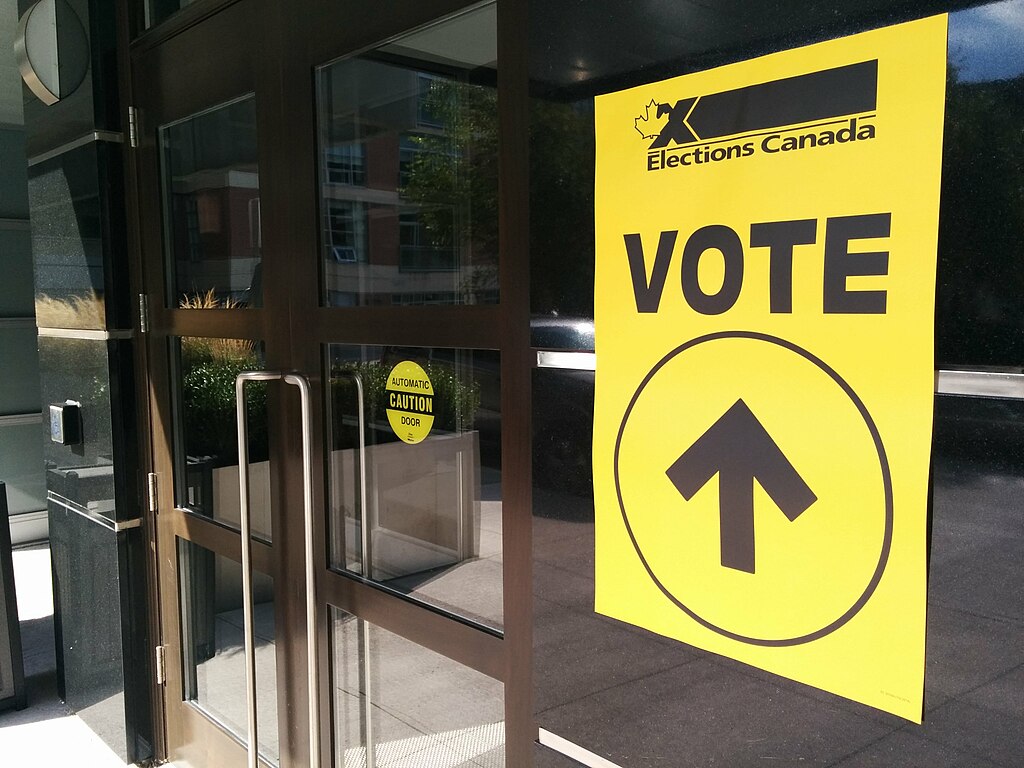By Gordon Cleveland, University of Toronto
What will child care in Canada look like after this federal election?
Depending on who becomes prime minister, parents now paying $10 a day for child care could continue to do so and many additional parents could access affordable day care in the future due to plans to expand. Or, the cap on child-care fees could be eliminated in a return to market provision of child-care services, in at least some provinces.
The $10-a-day plan, introduced by the Liberal government through Canada-Wide Early Learning and Child Care agreements (CWELCC) with provinces and territories, was developed to improve Canada’s long-standing inadequate child-care situation.
Québec’s model for child care inspired the Canada-wide plan. Under Québec’s CWELCC “asymmetrical agreement,” the province receives federal transfer funds without conditions.
After the April 28 election, it’s expected our new prime minister will either be a Liberal or a Conservative — Mark Carney or Pierre Poilievre.
Both leaders have said they want to preserve affordable child care but have presented their proposals in significantly different ways.
As an economist with specialization in the economics of child care and early childhood education, I believe looking beneath surface statements reveals major differences that would affect parents, children and their families.
Strengthening the $10-a-day policy
The Liberal Party’s newly released platform highlights the protection and strengthening of the $10-a-day early learning and child care system. The platform promises the building of 100,000 new child-care spaces by 2031, better compensation for child-care educators, the expansion of child care in public institutions and a stronger link between housing development and child care when housing is supported by federal funds.
In the Liberal leadership debate, Carney said we “absolutely have to keep in place the progress that the government has made on crucial things such as child care….” The Liberal platform affirms this, takes credit for introducing the existing system and notes: “In just a few short years, this program has become a core part of Canada’s social infrastructure.”
Since January, among the provinces and territories, all but Alberta and Saskatchewan have approved or tentatively approved five-year extensions to early learning and child-care funding agreements with the federal government.
Those extensions are key, as they represent commitments from 11 provinces and territories to use the federal government’s additional $37 billion to continue building the $10 a day program through 2031.
The NDP supported $10-a-day child care in the last election and continues that support, although child care is not mentioned in their published election platform.
Changing the $10-a-day policy
Poilievre, on the other hand, wants major changes from the $10-a-day child-care policy but he has not been forthcoming about details.
However, he did discuss ideas and major criticisms in a March 25 campaign stop in Vaughan, Ont.
He said: “We all believe that there should be more affordable child care in this country.” But then he criticized the current system as “bureaucratic” and “top down,” saying that “provinces can decide how to deliver those services on the front line with more flexibility and freedom for parents, provinces, and providers….”
Clearly his “affordable child care” will not look anything like the burgeoning $10-a-day system.
Poilievre’s wording is very similar to that of a new lobby organization of for-profit child care operators.
The group calls for a shift from “federally controlled funding to no-strings-attached childcare funding for the provinces …” It also calls for a “funding-follows-the-family approach” which they believe will encourage parental and operator choice and minimize bureaucratic administrative costs and red tape.
The Poilievre position, then, is an update from former Conservative leader Erin O’Toole’s policy proposals during the 2021 federal election.
It harkens back to the cash-for-care approach Stephen Harper’s Conservative government had in place from 2006 to 2015. Conservatives prefer and encourage the provision of cash, a tax credit or voucher that parents can spend on child care.
Such a Conservative approach is known as demand-side funding rather than supply-side funding — giving parents money to pay some of their child-care costs instead of funding child-care providers to ensure the services are available for families.
Examining Conservative criticisms
The “flexibility and freedom” that come with demand-side funding would mean removing conditions such as a guaranteed parent fee of $10 a day, targets for expansion of licensed child care, growth primarily by public and non-profit provision, and requirements for public financial accountability, from the federal funding agreements with the provinces and territories.
There are substantial problems with Poilievre’s suggestion of overhauling the $10-a-day program. First, his March 25 criticisms are flawed:
- He said “120,000 fewer children have daycare spaces than when the program was created,” but Statistics Canada surveys show a growth in attendance at child-care centres of an additional 177,900 children from late 2020 to the first half of 2023.
- Poilievre said “child care now is worse than when the Liberals took office.” In fact, the main indicators of availability and affordability of child care are much better. Between 2015, when the Liberals took office, and 2023, the number of child care spaces grew by 426,203 to a total of 1,627,211 total licensed spaces. Child-care affordability is also greatly improved. By 2023, child-care fees had dropped by between 40 per cent and 75 per cent nearly everywhere across Canada, varying by geography and child age. As a proportion of after-tax family income, parents’ average spending on child care in January 2025 was less than one third of what it was before 2021, declining from just under 16 per cent to five per cent.
- Poilievre said “most of the money has been consumed by bureaucracy.” In fact, child-care fees have dropped to an average of $10 a day (or less) in Yukon, Northwest Territories, Nunavut, Saskatchewan, Manitoba, Québec, Prince Edward Island and Newfoundland/Labrador, and all the remaining provinces have lowered parent fees substantially.
This would not have been possible if “most of the money was consumed by bureaucracy,” something easily seen in readily available public data on how child-care funds are spent.
Demand-side funding solutions
Demand-side funding solutions with no cap on fees would be a dream for private corporations looking to enter a Canadian child-care market rich with public funds but a nightmare for cash-strapped parents who are desperate for child care.
Australia is the poster child for generous demand-side funding of child care.
In the Australian model, parents spend funds however they like, and there is no restriction on the fees providers can charge and no requirement for financial reporting. Funds are paid directly to child-care providers from the government on behalf of parents and corporate child-care thrives. Under this funding model, Australia has seen a sixfold increase in child-care fees since the early 1990s, twice as much as the increase in consumer prices.
Bolster gains already made
Nearly a million Canadian children between the ages of birth to five years are already able to access low-fee licensed child care.
Building a quality child-care system is underway, but the work is far from complete.
It’s time to redouble efforts to provide affordable, quality child care for all who need it rather than to abandon these major combined efforts of federal, provincial and territorial governments to build a dependable and affordable child-care system.
Gordon Cleveland, Associate Professor Emeritus, Economics, University of Toronto
This article is republished from The Conversation under a Creative Commons license. Read the original article.






